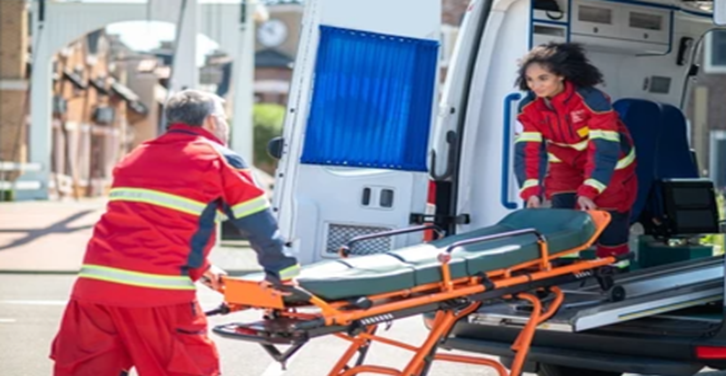
Knowledge Center

Accident and Emergency
| 29 July 2025
Medical emergencies can occur at any time, and being ready to respond effectively can make a significant difference in saving lives. In India, statistics indicate that there are over 138 lakhs visits to emergency rooms each year, with nearly a quarter of those visits due to sudden and life-threatening situations. Identifying medical emergencies early and understanding basic first aid principles can greatly enhance survival chances while waiting for professional assistance.
Many first aid techniques are straightforward yet essential, and learning these skills can be empowering, especially for caregivers and those working in high-risk jobs. First responders frequently apply these basic techniques to manage common medical conditions until paramedics arrive. In the following sections, we will explore some of the most frequent medical emergencies and provide practical advice on how to address them effectively.
Understanding how to identify medical emergencies is essential for anyone who wants to learn about first aid. Being able to recognize the signs and symptoms allows you to react swiftly and effectively, which can be vital in saving a life. In this article, we will look at top 5 most common medical emergencies and what actions you can take in each case.
There are various reasons why a person might experience breathing difficulties, such as asthma attacks, severe allergic reactions (like anaphylaxis), or illnesses like coughs and colds. While it’s normal to feel breathless during physical activities, sudden or unexpected breathlessness can be a serious warning sign. Someone having trouble breathing may show certain symptoms, including discomfort in their chest when taking deep breaths, a feeling of being unable to catch their breath, rapid or shallow breathing, and noisy breathing sounds like wheezing or gasping. This situation can lead to feelings of panic, making it even harder to breathe. Therefore, it’s crucial to stay as calm as possible. If you're concerned about someone's breathing, it’s important to get medical help quickly from our accident & emergency department in Mumbai at Jaslok Hospital & Research Centre, where a dedicated team is available to provide the care and support you need..
When someone collapses, they probably need urgent medical care because their ability to stay awake or breathe might be compromised. Various medical issues could cause a collapse, and a healthcare professional should evaluate the situation. If a person has lost consciousness and is not breathing, it is crucial to call 999 for emergency assistance. If they are unconscious but breathing normally, you can carefully place them in the recovery position on their side, as long as it's safe for you to do so, and you should still call 999 for help. Always ensure the area is safe before trying to assist someone who has collapsed; if it’s unsafe, get help or advice instead.
Choking happens when something, like food or an object, gets stuck in someone’s throat or windpipe. This can make it hard for them to breathe. Here are some signs that someone is choking:
If you see someone choking, you can try some actions to help them:
After trying these methods, it's important to get medical help if they still have trouble breathing.
Respiratory distress, which means difficulty in breathing. This can happen when your lungs are inflamed or infected. Here are some signs that someone might be having breathing problems:
If someone is struggling to breathe, it’s important to stay calm and call for an ambulance immediately. Here are some first aid steps you can take while waiting for help:
A heart attack is a very serious health problem that happens to about 805,000 people in India every year. It’s important to spot the signs of a heart attack early so that you can get help quickly and avoid serious problems, including death. Here are some common signs that someone may be having a heart attack:
If you see someone showing any of these symptoms, you should call an ambulance immediately and start giving them CPR. Visit our emergency medical hospital in Mumbai for additional guide on how to perform CPR properly.
Knowing how to respond effectively can make a crucial difference in the outcome of any situation. By familiarizing yourself with the top common medical emergencies and implementing the appropriate steps, you can provide vital assistance before professional help arrives. In critical moments, remember that our accident & emergency department in Mumbai at Jaslok Hospital & Research Centre is equipped to handle urgent medical situations, ensuring that those in need receive the care they deserve. Empower yourself with knowledge and confidence, and be prepared to act swiftly; your ability to respond could save a life.
All Copyrights Reserved. © 2026 Jaslok Hospitals | Managed by Digimanic